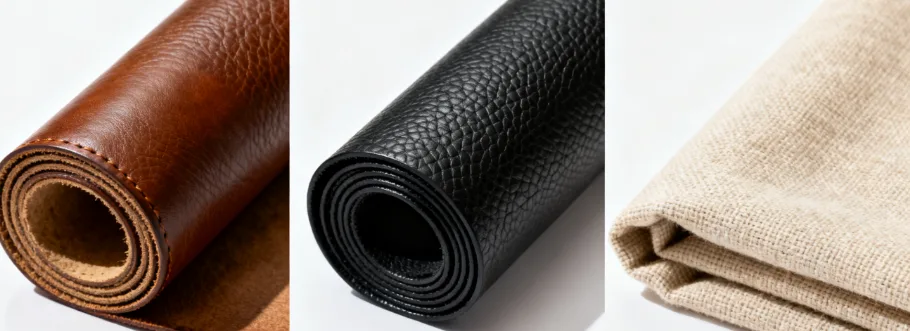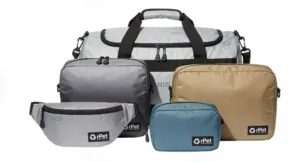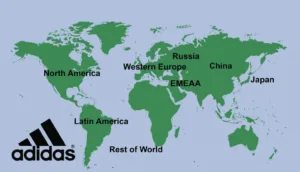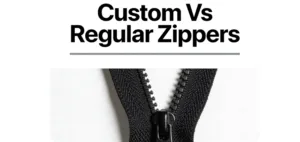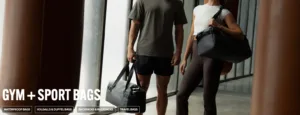In the competitive bag manufacturing industry, one of the biggest challenges brands face is finding the right balance between cost and quality. The choice of material not only determines how a bag looks and feels but also directly affects its bag retail price, profit margin, and market positioning.
Among the most popular materials used today are genuine leather, vegan leather, and canvas — each with its own cost structure, production complexity, and brand image implications. Understanding the differences between these materials is essential for brands planning their next collection or manufacturers evaluating the best sourcing strategy.
Over the past few years, vegan leather has gained significant attention as consumers grow more conscious about sustainability and animal welfare. But what exactly is vegan leather? Unlike traditional leather, which is made from animal hides, vegan leather is typically produced using PU (polyurethane), PVC, or newer plant-based alternatives such as pineapple fiber (Piñatex), cactus, and apple leather. This innovation allows brands to achieve a leather-like appearance while maintaining an eco-friendly narrative.
Meanwhile, canvas continues to dominate the casual and travel bag segments due to its affordability and versatility, while genuine leather remains the gold standard for durability and timeless luxury.
In this article, we will break down the cost differences between leather, vegan leather, and canvas — from raw materials to manufacturing and maintenance — helping brands and OEM/ODM partners make informed decisions when selecting materials for production.
Contents
What Are the Key Differences Between Leather, Vegan Leather, and Canvas?
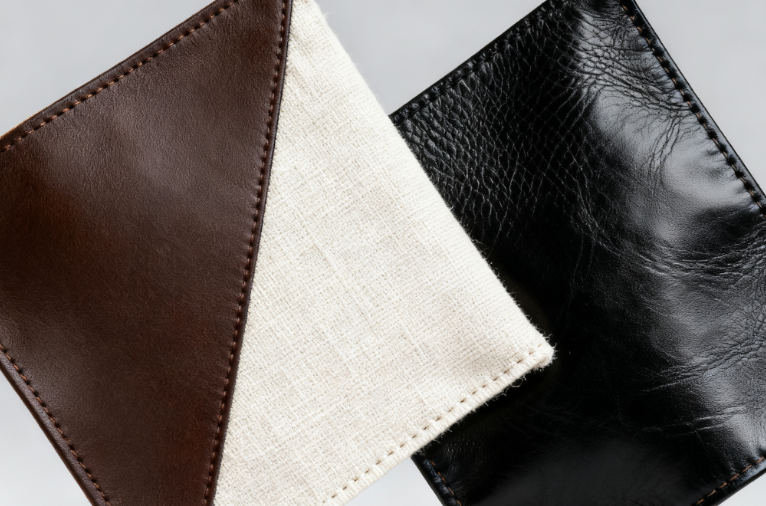
When comparing leather, vegan leather, and canvas, it’s essential to understand that each material brings a completely different structure, performance level, and manufacturing process to the table. Much like how Bogg Bags are uniquely defined by molded EVA foam, these three materials define the look, cost, and longevity of every bag design.
1. Leather – The Benchmark of Luxury and Longevity
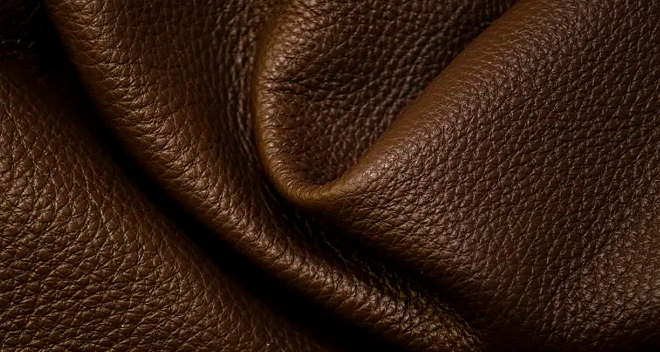
Leather is made from animal hides — most commonly cowhide or sheepskin — through a tanning process that stabilizes the protein structure to prevent decay. There are several types, including chrome-tanned leather for softness and veg-tan leather for natural firmness and a rich patina over time.
Key Features:
- Durability: High tensile strength (10–25 MPa) and resistance to stretching.
- Texture & Aesthetics: Each hide is unique, with visible natural grains that age beautifully.
- Comfort: Breathable and flexible, adapting to the user over time.
- Care Needs: Requires conditioning and protection from moisture to maintain appearance.
Drawbacks:
- High Cost: Genuine leather is the most expensive among all bag materials.
- Production Complexity: Labor-intensive cutting, stitching, and finishing.
- Ethical Considerations: Derived from animal hides, which some consumers avoid.
Used For: Premium handbags, wallets, travel bags, and executive accessories.
Vegan Leather – The Modern Eco Alternative
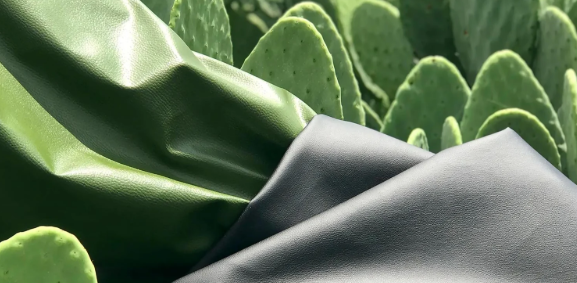
Vegan leather, often called synthetic or faux leather, replicates the texture of genuine leather using PU (polyurethane), PVC, or newer plant-based fibers such as cactus, pineapple, or apple peels. While it offers a cruelty-free and sustainable story, its physical performance varies depending on composition.
Core Composition:
- PU-based Vegan Leather: Soft, flexible, and lightweight, ideal for fashion bags and jackets.
- PVC-based Vegan Leather: More rigid and durable but less breathable.
- Plant-based Vegan Leather: An emerging trend offering biodegradable, non-toxic surfaces.
Performance Insights:
| Property | PU / PVC Vegan Leather | Benefit |
|---|---|---|
| Density | 1.0–1.3 g/cm³ | Thinner but firm texture |
| Water Resistance | Excellent | Easy to clean, suitable for daily use |
| Abrasion Resistance | Moderate to good | Suitable for handbags and small goods |
| Lifespan | 2–5 years | Requires less maintenance |
Advantages:
- Cost-Effective: Significantly cheaper than real leather.
- Ethical & Sustainable: Animal-free, fits eco-conscious branding.
- Versatile: Wide range of colors, embossing, and finishes available.
Drawbacks:
- Shorter Lifespan: May peel or crack over time.
- Less Breathability: Synthetic coating limits airflow.
- Heat Sensitivity: Can deform under high temperatures.
3. Canvas – Lightweight, Durable, and Affordable
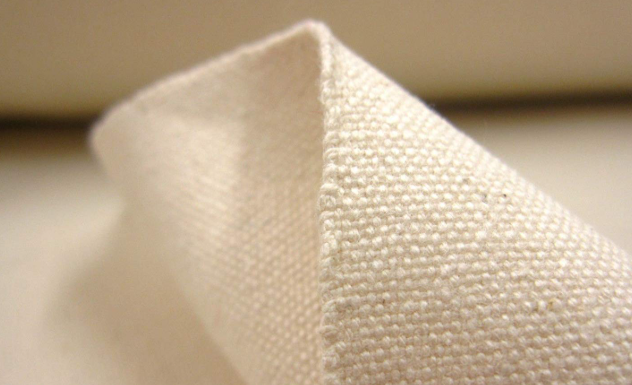
Canvas is a woven fabric typically made from cotton, linen, or polyester blends. Known for its strength-to-weight ratio, it’s one of the most cost-efficient materials for casual, outdoor, and travel bags.
Material Properties:
| Property | Canvas (Cotton Blend) | Impact on Bags |
|---|---|---|
| Density | 0.6–0.9 g/cm³ | Lightweight and easy to carry |
| Tensile Strength | 8–15 MPa | Good durability for daily use |
| Water Absorption | High (10–20%) | Needs waterproof coating for outdoor use |
| Maintenance | Machine washable | Convenient and low-cost upkeep |
Advantages:
- Affordable: Lowest raw material cost among the three.
- Customizable: Easy to print, dye, or embroider logos.
- Eco-Friendly Options: Available in recycled or organic cotton versions.
Drawbacks:
- Absorbs Water and Stains Easily: Requires coating or lining.
- Less Structural Integrity: Bags may collapse without inner support.
- Color Fading: Prolonged sunlight exposure reduces vibrancy.
Used For: Tote bags, backpacks, duffels, and promotional products.
Just like EVA revolutionized molded structure in Bogg Bags, each of these materials serves a distinct market and production purpose. Leather defines luxury and longevity, vegan leather leads the sustainable fashion wave, and canvas dominates affordability and functionality. Understanding their properties is the first step toward building an efficient and market-fit cost strategy.
How Does Each Material Affect Bag Manufacturing Cost?
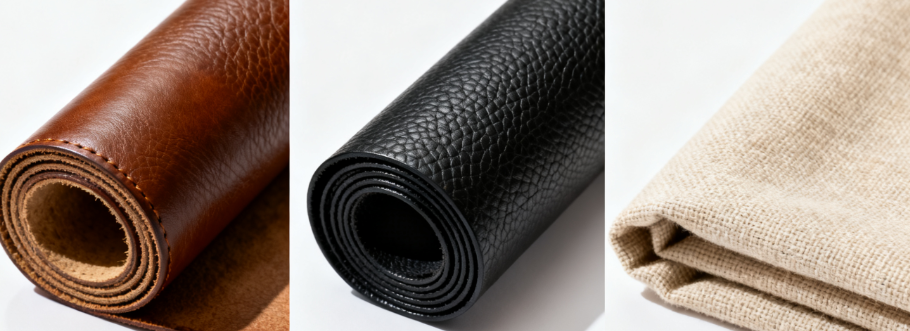
The bag manufacturing cost depends not only on the raw material itself but also on processing, labor intensity, and production efficiency. Below is a detailed cost comparison between Leather, Vegan Leather, and Canvas to help brands and manufacturers evaluate real pricing differences.
Raw Material Cost
Leather
Among all materials, genuine leather has the highest cost, averaging $2–6 per square foot, depending on the grade and tanning method. Veg-tanned leather and full-grain leather are at the premium end, offering superior texture and longevity. The origin also plays a role — Italian or Bangladeshi tanneries can influence the final leather production cost due to craftsmanship and finishing standards.
Vegan Leather
Vegan leather offers a mid-range option, typically priced between $0.8–2 per square foot. Most are made from PU or PVC, allowing for large-scale, roll-based production that ensures consistent quality and stable pricing. Newer plant-based versions — like cactus, pineapple, or apple leather — are slightly more expensive but align with sustainable brand values.
Canvas
Canvas remains the most cost-effective option, ranging from $0.3–0.8 per square foot. Cotton or polyester canvas is easy to source in bulk and ideal for casual or outdoor bag collections that prioritize affordability and function.
Processing Cost
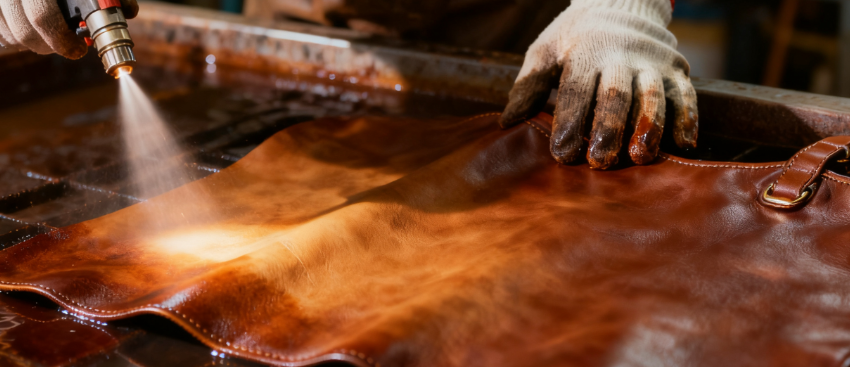
Leather
Processing leather requires multiple stages — tanning, dyeing, buffing, embossing — all of which demand skilled craftsmanship. These labor-intensive steps significantly raise bag manufacturing cost and extend production time. Each batch needs quality inspection to ensure color consistency and surface smoothness.
Vegan Leather
The vegan leather manufacturing process is more streamlined and automated. Roll material can go directly into cutting and sewing lines without natural drying or tanning steps. The result is better consistency, faster lead time, and lower labor cost — perfect for OEM and ODM production.
Canvas
Canvas requires minimal processing. After cutting and stitching, it’s ready for assembly, making it one of the most efficient and economical materials for large-scale bag production.
Manufacturing Efficiency
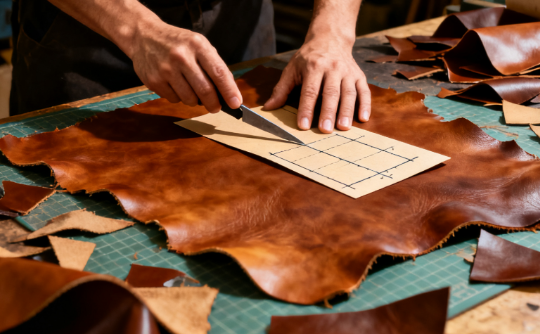
Leather
Natural hides have irregular shapes, leading to higher waste rates (10–20%) and longer production cycles. Despite this, the premium appearance and durability justify higher retail pricing.
Vegan Leather
Roll-based vegan leather manufacturing minimizes waste (less than 5%) and ensures smooth workflow. It’s an excellent balance between efficiency and quality, especially for brands that focus on ethical production.
Canvas
Canvas delivers the highest production efficiency — ideal for mass-market or promotional bags. It’s easy to cut, lightweight to handle, and fits perfectly into automated sewing lines, making it the most economical bag material for OEM manufacturers.
How Do Maintenance and Longevity Affect Bag Costs?
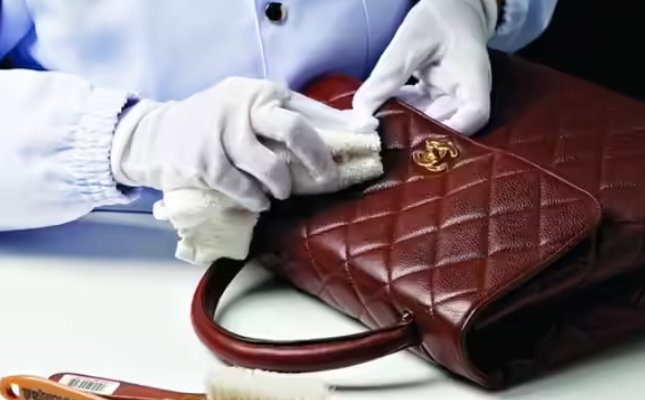
When choosing bag materials, the initial purchase price is only part of the story. The long-term value depends on how durable the material is, how much maintenance it requires, and the potential replacement frequency. Brands and consumers alike need to consider bag maintenance cost and overall lifespan before making decisions.
Why These Materials Age Differently
The differences in longevity stem from the material composition and manufacturing process:
- Leather: Made from animal hides, leather is naturally strong and flexible. Its fibrous structure allows it to resist wear and tear, but it is sensitive to moisture, heat, and UV exposure, which is why regular conditioning is essential.
- Vegan Leather: Composed of PU, PVC, or plant-based alternatives, vegan leather mimics leather’s appearance but lacks natural fiber strength. It is easier to clean but more prone to cracking and peeling over time.
- Canvas: Woven from cotton or polyester fibers, canvas is lightweight and breathable. However, it absorbs water, stains easily, and loses structural integrity faster than leather-based materials.
Comparison Table: Maintenance and Longevity
| Material | Average Lifespan | Maintenance Requirements | Potential Extra Costs | Key Notes |
|---|---|---|---|---|
| Leather | 5–10 years | Regular oiling, conditioning, moisture protection | Leather care products, occasional repairs | Long-lasting; develops patina with age |
| Vegan Leather | 2–5 years | Easy to clean with damp cloth | Early replacement due to cracking/peeling | Low maintenance but shorter lifespan |
| Canvas | 1–4 years | Machine wash or spot clean | Frequent replacement, fading over time | Affordable but less durable |
While leather requires more care, its durability and long-term value make it the most cost-effective option over time. Vegan leather balances ease of maintenance with a moderate lifespan, making it ideal for trend-driven collections or ethical brands. For those wondering what is vegan leather, it is a synthetic or plant-based alternative that mimics real leather’s look and feel. Vegan leather bags offer a stylish and sustainable choice without the need for animal products. Canvas provides low upfront cost and minimal care needs but often requires more frequent replacement. Working with an experienced Sunteam factory ensures high-quality bag production and guidance on material selection. Understanding these differences helps brands and consumers make informed choices about material, pricing, and lifecycle costs.
How Can Brands Choose the Right Material for Their Bags?
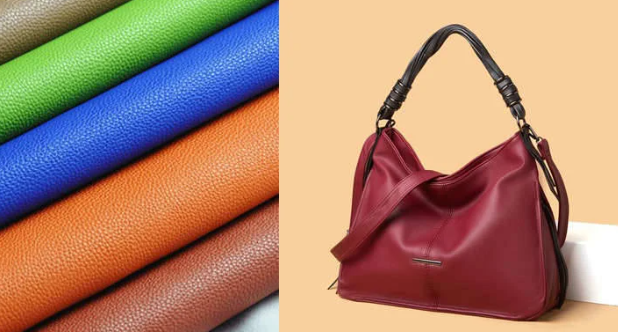
Selecting the right material is a critical decision for brands and manufacturers, as it directly impacts product positioning, customer perception, and long-term profitability. Understanding your target market and brand values is key:
- High-end or long-lasting products: For premium collections where durability and luxury feel are priorities, Leather remains the top choice. Its natural texture, longevity, and timeless appeal help justify higher price points and attract discerning customers.
- Eco-conscious or trend-driven brands: If your brand emphasizes sustainability, ethical production, or current fashion trends, Vegan Leather is ideal. Made from PU, PVC, or plant-based alternatives, it provides a leather-like appearance without using animal hides. Brands can also promote the material’s environmental benefits while appealing to younger, style-focused consumers.
- Functionality and cost-sensitive collections: When practicality and value-for-money are the main selling points, Canvas offers lightweight durability and easy maintenance at an affordable price, making it suitable for casual, travel, or promotional bags.
For brands working with OEM/ODM bag manufacturers like Sunteam, the material selection process is simplified. Experienced factories can provide multi-material sampling and production solutions, helping brands balance budget, design requirements, and target market expectations. Whether it’s a luxury leather line, a vegan leather trend collection, or a functional canvas series, Sunteam’s production expertise ensures consistent quality and efficient manufacturing.
Conclusion
Choosing the right bag material affects both bag manufacturing cost and customer satisfaction. Leather provides long-lasting durability and a premium feel, making it ideal for high-end collections. Vegan Leather offers an ethical and sustainable alternative that appeals to eco-conscious consumers, while Canvas remains practical and cost-effective for everyday use.
Partnering with an experienced bag manufacturer or OEM/ODM factory like Sunteam ensures efficient production, high-quality results, and tailored solutions for your brand. Understanding these material differences helps brands create bags that balance durability, style, and budget, while meeting market expectations.

